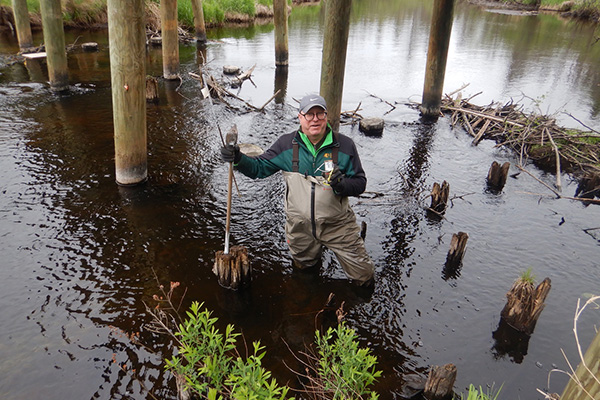Projects
STREAM CONSERVATION
The Upper Peninsula is rich with coldwater streams and opportunities for outdoor recreation. Our projects concentrate on conserving these streams and enhancing their value through scientifically based, properly permitted, and properly coordinated projects. Various human impacts in the past have degraded portions of what would otherwise be high-quality coldwater streams. We have site-specific projects ongoing to mitigate impacts or to restore more natural conditions. Many of these projects are also specifically designed to improve public use, access and education. Our project work is dependent on fundraising and volunteer participation. We urge you to engage one of our directors in a discussion on how you might help with your time or with your financial support. Generous financial and volunteer support has us currently engaged in habitat restoration projects in practically all counties in the Fred Waara TU Chapter area.
CURRENT AND RECENT PROJECTS
Stream Data Collection in Iron County
Stream data collection is in progress in Iron County where we have 39 stream temperature recorders in place. These help support a number of ongoing DNR and USFS fisheries management programs as well as topic-specific matters such as the incursion of warm water species into coldwater fisheries, the effects of changing weather on average stream temperatures or the creation of pre-project databases.
Schwartz Creek Culverts
In 2016 and 2017, FWCTU and Michigan TU secured funding through USFWS and Michigan DNR grants to help restore native brook trout passage in Schwartz Creek. The work on this coldwater tributary of the West Branch of the Escanaba River restored not only the ability of brook trout to pass through the crossings, but also restored the 60-Day Creek’s natural capacity to transport water, sediment, woody debris, and aquatic organisms.
Cook’s Run Brush Bundles
In 2017, the Chapter secured a permit through the USFS to build and install brush bundle sand traps and collect stream data in Cook’s Run. This in-progress, multi-year project focuses on sand and silt reduction to improve habitat within the river while collecting critical stream flow and temperature data. The data collected will be studied by USFS fisheries biologists to help determine the effectiveness of the sand traps and guide future work.
Yellow Dog Watershed Tree Plantings
In 2020, the Chapter worked in conjunction with the Partners for Watershed Restoration Brook Trout Committee to coordinate the planting of 500 native white pine, cedar, and hemlock tree plugs along Lost Creek. The Yellow Dog Watershed Preserve hosted the event, which brought in nearly 40 volunteers. In 2021, our Chapter received a $5,000 Cleveland Cliffs Foundation grant to purchase 1,240 additional trees to complete the planting along Lost Creek. This time, in addition to 1,000 native evergreen plugs, we also planted 240 larger evergreen saplings up to 44 inches in height. Many of the 42 volunteers that cheerfully came out to help were from beyond our immediate Chapter, including a number of university students.
WHAT’S IN IT FOR YOU?
Our Chapter “work” typically consist of a few hours of light physical activity followed by participant socializing and fellowship. Some members, considering their health, oftentimes attend projects just to watch and learn. In any case, we make our events fun and social, educational and accessible for all ages and levels of interest. Please give it a try. We can only succeed with your help. For more information, please contact one of our directors.





